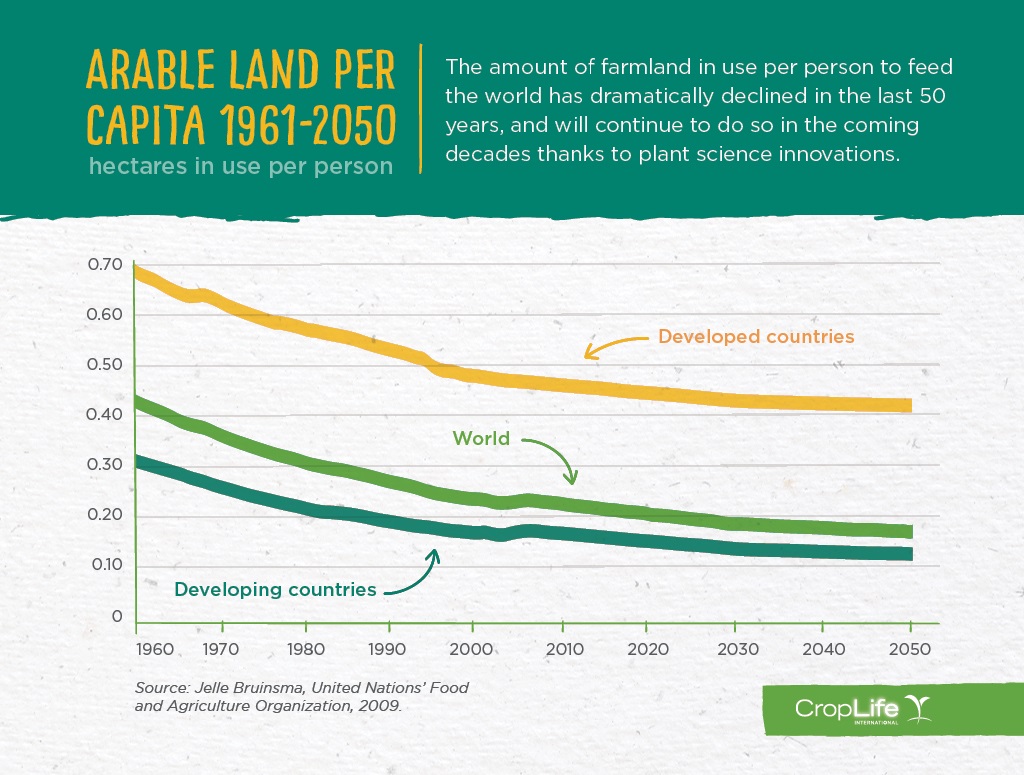By: CropLife International
Thanks to plant science and other innovations, agriculture has progressed tremendously over the past 150 years, becoming more and more efficient over time. If the world’s farmers would have continued to grow crops at 1961 productivity levels, they would need almost a billion hectares of new farmland to maintain today’s food supply – which is more than the total land area of the United States!
Below are a few snapshots of U.S. and global agriculture over several decades, which highlight how far we’ve come in terms of increased crop production. Doing the math, in 1860, each U.S. farm fed an average of 15 people. In 2010, each farm could feed over 140 people! During that same time, the population increased 882 percent, but the total acreage dedicated to farmland did not increase as drastically. Farmers became more efficient, using improved seeds, crop protection products, machinery and more that resulted in more yields on cultivated land. All of this occurred while reducing the workforce involved in agriculture from nearly half of the population in 1860 to less than 1 percent now.

To keep up with the growing population, the Food and Agriculture Organization (FAO) predicts that agricultural production will need to increase by 70 percent (nearly 100 percent in developing countries) by 2050. The FAO says that 80-90 percent of this increase will come from higher yields and increased cropping intensity – the number of crop growing seasons that can occur in one year – with only the small remainder coming from converting land not currently used for farming.
The chart below shows that the total “arable land,” or land used for farming, peaked in the late 1960s and has declined or maintained until now, thanks to agricultural innovations. As countries continue to produce higher yields and use the land more efficiently, this trend is expected to continue in the future.

This article and the image included was published and created by CropLife International. See original post here.
